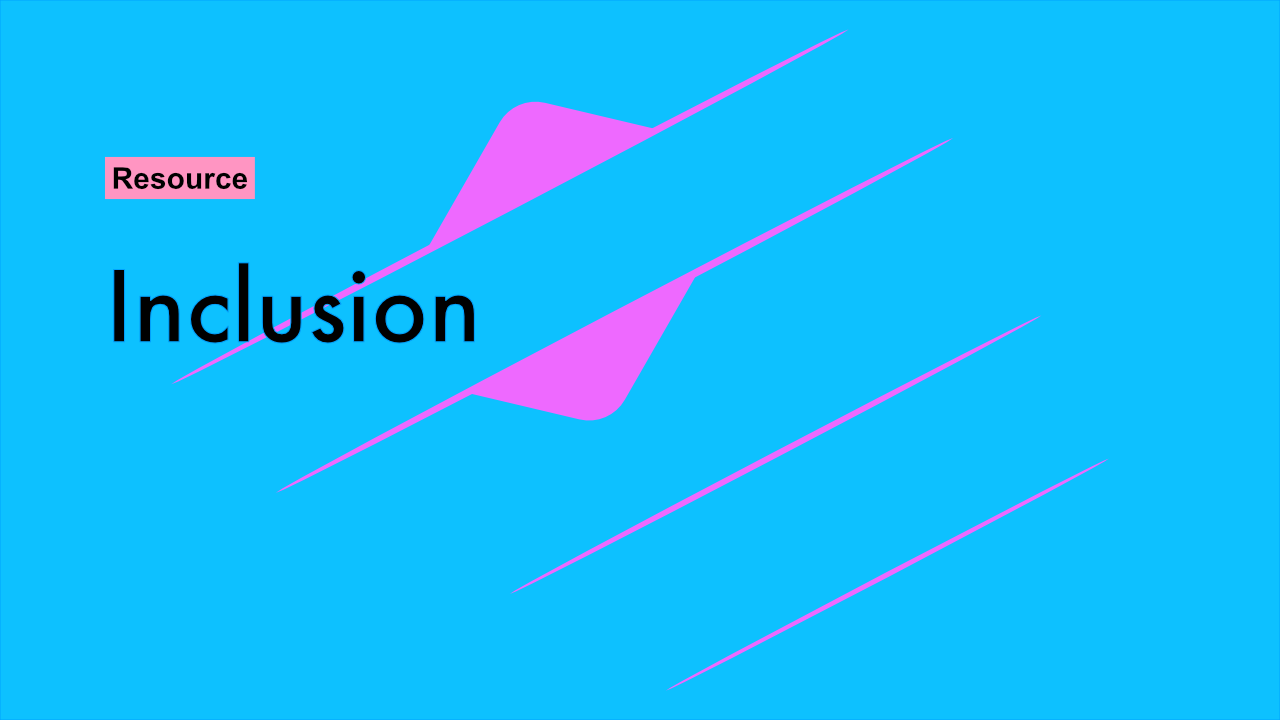
Diversity Quotas Do Not Equal Inclusion.
Setting The Course for Brilliant Collaborations
by ROBERT YANG
Having a space to work to feel comfortable because of who you are is one of the key factors employees excel in a workplace.
When you are in the position to start from the ground up, a center for brilliant collaborations, take into consideration what the space can do to bring out the best in everyone.
The environment should be hospitable for growth and free thinking.
Proper decorum should be first established.
This can be provided in an employee handbook. Setting the ground rules for conduct and outlining what is inapporpriate gives the workspace a consensus and playbook for team work and collaborations. Of course this doesn't just apply to the office. This can have wide ranging applications in contacts, bookings, consultation. Going off some experience I've had in the in the past with artist bookings, you can establish in contracts with talent agencies and vice-versa with promoters conditions that could terminate agreements when misogyny, trans- and homophobia or racism is experienced. They should be able to walk off from a show without penalty to the agreed upon fee. This is important because at some point some one will get heckled and disrespected especially as the night gets hazy.
You may encounter from time to time collaborators who may say something or comment on a feature about you that seems out of place and out of context. Perhaps you make a suggestion for lunch and they say things like “I don’t like any kind of Asian food because it’s too spicy and it just doesn't agree with me.”
You may feel a bit stunned at the carelessness of a comment. Perhaps they didn’t mean anything offensive. Maybe they didn't realize they made a blanket statement. Learn to recognize the structure that allows them to express coded sentiments freely without boundaries and then help them understand ways to improve communication, on both side.
Improving communication in the workplace helps preserve momentum for team rapport. Being precise about communicating things that hurt you. Keep a notebook to help you manage your reactions when these things crop up. Start building tools and response macros to help fend off microagressions. When something triggers, it's best to quickly write down your thoughts in a notepad on your phone.
Then start piecing together the patterns that disturb you and formulate a new approach to shut down infractions.
With your collaborator who you get along with but needs help curating their thoughts, you may start with something along the lines of “I wanted to speak with you quickly about a comment you made the other day. I want you to know how it affected me personally and may affect my job performance. I need to let you know so we can have a better work relationship.”
Don't let feelings fester. More likely than not, we all need to maintain good work climate and culture. That forces us to listen. When confronted with these topics your colleague will appreciate the feedback when no one has been brave enough to speak up.
It’s Reflection not a Rebuttal.
When you are in the position of making an off-color remark that hurts someone, you need to first take ownership of what you said, acknowledge another's existence and work towards an understanding.
Listening instead of reacting will save you headaches and the trouble of getting into deeper machinations in the theories of morality. When you react to something, this isn't a lot of thought put into your response process (no matter how quick of a thinker you may be). You will miscalculate at some point and make mistakes.
When you are multitasking various emotions and feelings you are having in this exchange, you are not at full mental capacity. No one is perfect. Learn to delay gratification for closure, your pride, and recalibrate your world outlook.
Working in a company, diversity and inclusion means being in an environment where you are not afraid to put yourself out there, to grow to nurture your dreams and aspirations to perform without the fear someone or something is trying to limit you.
A Quick Personal Story.
As soon as I started my first job right out of college I came out of the closet as gay. It was like my mind was partially inflated before but became fully taut at capacity. I felt very insane and productive.
That energy propelled me to working for companies and startups 13 years in a row with no breaks. From time to time, I do get upset about the idea that had I been given the opportunity to be myself at a younger age, I could have done better in school, got better grades or gone to the university of my choice.
Today is here. I’m proud of everything I have accomplished to this point. I am able to pursue music as an activity while at the same time challenging myself to excel in my digital marketing career.
Pride and Ownership.
People work in a place where they can feel an immense sense of pride because of the people they work with, the mission and objectives that we strive for in a place that helps people feel comfortable in their own skin. The past of course reflects a lot more different values especially what it means to be an out and proud queer as well as being a minority working in a professional capacity.
A brief historical well known detail that bears repeating: Pride was a riot that started at the end of June in 1969 following a police raid that brutalized gay, lesbian and transgender people of color at the Stonewall Inn on 43 Christopher Street in New York City.
Soon, thereafter, a series of demonstrations that weekend including protests and marches became a watershed moment to shape the global discussion of minorities who belonged to various identity groups along the spectrum.
After a year, to commemorate the anniversary of initial pride actions, marches were scheduled in Chicago and LA as well as pride's wellspring New York City. Five decades later, the presentation and perception of the festival had deviated from the original intent.

It is important to understand the context of these events and how they have shaped a lot of work culture for many organizations around the world. Do you plaster your company’s logo with rainbow colors because you have actually achieved an employee experience that fosters development of individuals who otherwise would have struggled because of empathy, support and equality? And furthermore, because the structure was not built by people who look like them?
As the employer and administrator ask yourself a few questions:
- When new employees start their roles, how do you ensure their path is well set up?
- How is working at your office different, and better than working at any run of the mill startup?
- What do you feel is the main differentiator for your office in terms of culture?
- How do you define culture at your company?
- How do you remove unconscious bias in the recruiting process?
- Why is this important to your organization and why now?
- What does diversity look like at your company? More importantly, within this realm what are the company’s values?
- What does cross-functional collaboration look like?
- What tools do you use to ensure communication is impactful and removes negative bias?
Build Teams and Manage in an Inclusive Light.
One last topic I’d like to speak about is leadership. A good leader provides vision, guidance and a path to success. They are coach and counselor working and training your skills to level the playing field so staff can focus on contributions and eventually moves on to form their own teams within the environment.
Team members who have excelled in their careers are looking for additional input into their growth. They want challenges and maintain peak performance.
As team lead it is not conducive to time to look at everyone’s inputs. Rather provide guidance and roadmaps (that will fluctuate) for each member’s success paths.
Providing tools like additional training for data analysis, or assigning projects to drive new ideas for a business's growth helps ensure every individual is set up for success.
Developing collaboration and communication techniques to foster learning through feedback loops and soundboarding techniques help acertain productivity levels are at their highest and a path to promotions are guaranteed.
Many times, structures are put into place because founders can't and don't think outside of their scope of vision. There is no acknowledgement of alternative views (yet). Finding qualified individuals to fill roles is very hard work. Knowing clearly how to see talent in people who have different backgrounds is valuable. Outsiders who see the forest for the trees bring fresh, electrifying ideas no one would even consider.
Do take it easy on ourselves. These ideas can be at times challenging and incongruent to an original intent. Work to embrace contradictions. This is healthy and helps us continuously and objectively seek out new clues to dial back patterns that may force us into damaging corners.
The success of an organization is dependent on how well one interprets the changing landscape of the workforce. Respect people's limits especially with regard to trivial matters like hair, looks, mannerisms. New thinking provide panacea to hardened rigid thinking.
Continuously move at the speed you want to see for your organization. Rage with your stellar achievements gracefully in step with the ever-shifting moods of the zeitgeist.